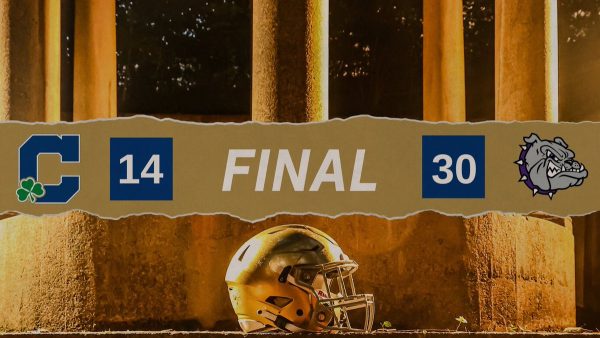Counselor: It’s not too late for seniors to file for aid
Colleges are flexible if your financial situation has changed
Counselor Ms. Kathy Pivonka provided members of the Class of 2021 with an update on filing for financial aid.
Comfortable weather, good student to teacher ratios and study abroad programs. There are so many academic and non-academic pulls to schools that sometimes students may forget the biggest one: money. Parallel to the college application process is the financial aid process.
Since the Free Application for Federal Student Aid or FASFA opened on Oct. 1, many seniors (or rather, their parents or guardians) have taken time to enter details from the 2019 tax year. This step is crucial because it could make the difference in attending one school or another.
College counselor Ms. Kathy Pivonka said that families who have completed FASFA should be able to expect their financial aid packages in the next few months. This does depend on where you apply, however. Pivonka said, “Some schools send their packages in late January, but February and April are going to be good times for you guys.”
But one thing, Pivonka stressed, is that “if you are a senior reading this article, it’s not too late.” The state deadline is April 15 and the federal deadline is June 30.
While it is better to file FASFA earlier to make sure that you receive the maximum amount of aid possible, students are still strongly encouraged to apply to make sure they receive at least some aid. For instance, a school might have already allocated its government funds for work studies, thereby reducing need-based aid for applicants. However, Pivonka said that she has not had a student who qualifies for aid not receive any funds at all because the school ran out.
Once students do finally receive their packages, they may not be thrilled with their results. Since FASFA is based off of the previous tax records, it may not be able to adequately take into account your current financial situation. If you and your family have encountered major financial blows, which is likely given the coronavirus’ effect on medical bills and job security, students may consider appealing for more aid. Closing the gap in out of pocket cost to a more bearable situation is perfectly valid, but students are likely to have a minimum cost.
Call the financial aid office of the college in question, explain your situation, and they should be able to help you from there. “If that package doesn’t look like what you think or hope it should be, you can deal. Some may say no, but some may say we can float you an extra $2,000. They won’t take away money,” said Pivonka. If a student feels hesitant, they can always visit the counseling office.
Deciphering your financial aid package may be another issue all together. “This is where it gets confusing,” said Pivonka. Packages are fluid, so students should make sure to routinely check their applicant portal and email to note any developments. Third party scholarships could possibly shift the amount of aid received, especially if the money is for tuition, housing or other costs.
The first half of the package is merit aid. Some schools may inform students of a scholarship prior to their package release. Pivonka named Indiana University as an example, since the college will tell students via email that they received a scholarship between $1,000 and $8,000. However, some scholarships, like the Annika Rodriguez Scholarship at Washington University in St. Louis or the Cox Research Scholarship at IU may come later. Ideally, but not always, your package will list the amount of merit money and what program it comes from.
The second part of the package is grant money. “Grants you don’t pay back,” said Pivonka, differentiating them from loans. State grants do exist, but Pivonka said that you often need to prove that they typically require more evidence of need. Private colleges and universities are able to use their endowment money for grants, so students applying to both private and public schools may notice a difference in their aid packages as a result.
Pivonka said that grants may be used as an incentive for students to attend. Her daughter received a housing grant from Marian University, demonstrating that the college “hopes a local kid would live on campus,” the counselor said.
The third part of the package is loans, which will need to be paid back, but students are not required to take them if they and their families don’t want to. Broken into two categories, loans may be either subsidized or unsubsidized. Subsidized loans will not have interest until six months after a student leaves or graduates from the university.
Unsubsidized loans will have interest regardless. Pivonka said, “Sometimes the interest rate can change but it’s pretty low.” It is difficult to qualify for more loan money, and students will need their parents to sign up for a Parent Plus loan since dependents will not have collateral.
Another component of need-based aid is a work study. Students who qualify for a work study will be paid by the government for jobs performed around the campus. For example, Pivonka’s daughter worked in the mailroom. An added benefit is that the work will be tailored to a student’s schedule, hopefully avoiding late night shifts and early morning classes. Since the money comes from the government, students in work study programs still collected paychecks when schools were initially shut down due to the pandemic.
“The tough part is laying it out on the table and seeing which is best,” said Pivonka. It’s a family decision. “Have conversations to know where (your parents) are willing to pay,” she said. If a financial aid package neglects to include the full cost of attendance (tuition, housing, travel, etc.), students should be able to find the information on the school’s website. Juniors are likely to benefit from taking this step before applying.

Andrew de las Alas is a senior and reporter for the Megaphone. He runs varsity cross-country, is co-captain of the speech and debate team and co-president...







